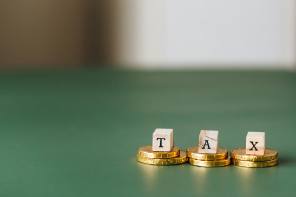Under the health and social care levy bill, Class 1 NICs for someone earning less than £50,270 will be 13.25 per cent; someone earning more than £150,000 will face an effective rate of income tax and NICs combined of 48.25 per cent.
Class 1 NICs for employers will be 15.05 per cent. Dividend tax rates will increase from April 6 2022 to 8.75 per cent for basic rate taxpayers, 33.75 per cent for higher rate taxpayers and 39.35 per cent for additional rate taxpayers (someone earning more than £150,000).
The scene was set
At the autumn Budget, the most recent reading for CPI inflation (September 2021) was 3.1 per cent and the Office for Budget Responsibility projected inflation would peak at 4.4 per cent in 2022.
The latest reading (February 2022) at the time of the spring statement had inflation at 6.2 per cent and the Bank of England expected inflation to hit 8 per cent in April, with it set to go higher later in the year with further rises to energy prices.
The OBR and BoE say that inflation will fall back materially in the following years to the official target of 2 per cent.
With the severe inflationary impact, the prime minister and large parts of the Conservative party wanted Sunak to cancel (or at least delay) the health and social care levy.
But this is a fiscally responsible chancellor, with a photo of Nigel Lawson in his office and ambitions to be a ‘low tax’ chancellor, however, Lawson did not have the scars of a global pandemic and the dark shadow of a £2.3tn national debt.
What did we get?
In a moment of major fanfare that would be worthy of any Budget announcement, Sunak confirmed the Conservative manifesto pledge to increase the primary threshold for Class 1 NICs to £12,570 from July 6 2022 – an increase of just over £3,000.
The NIC saving is worth up to £330 with a total saving in the 2022-23 tax year of £267, because the threshold increase only takes effect from July 6.
The decision to align the NIC thresholds with the income tax allowances and bands is a long overdue simplification to the UK tax system, but it does highlight that the effective rate of tax someone earning more than the personal allowance is 33.25 per cent.
An employed worker earning £25,000 will be £205 better-off next tax year because of the NIC threshold increase; someone earning more than £41,389 will be worse-off because of the impact of the additional 1.25 per cent NIC.
> With the effect of wage inflation, more people and families than ever will be dragged into 40 per cent taxation











